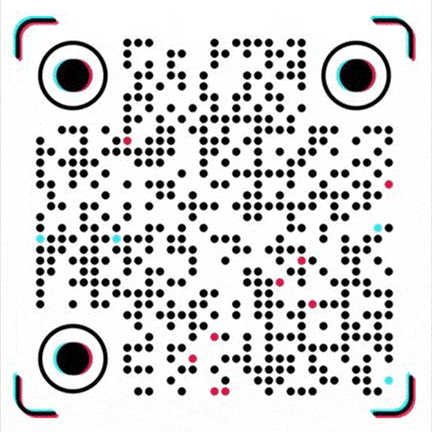PET Processing: Fundamentals, Techniques
1. Basic characteristics and pretreatment requirements of PET processing
As a semi-crystalline thermoplastic, PET has a high melting point (250-260℃), good mechanical strength and transparency, but its processing performance is extremely sensitive to humidity. The pretreatment link before processing directly affects the quality of the finished product:
Core technology of drying treatment
Principle: The ester group in the PET molecular chain is easy to absorb water and hydrolyze, resulting in a decrease in molecular weight and deterioration of the mechanical properties of the product (such as cracking and reduced strength).
Process parameters: It needs to be treated in a 120-150℃ hot air circulation drying oven for 2-4 hours to reduce the moisture content to below 0.02%. Some high-precision products (such as optical films) need to be further vacuum dried to control the moisture content below 0.005%.
Equipment selection: Use a dehumidifying dryer (such as a honeycomb rotary drying system) with dry air with a dew point below -40℃ to ensure drying efficiency.
Application specifications of recycled materials (regrind)
Usage ratio: 10%-25% of recycled PET particles can be added to general products, but attention should be paid to the degree of contamination of the recycled materials (such as impurities and discoloration). Food-grade packaging materials must use FDA-certified food contact-grade recycled materials, and the ratio is usually not more than 15%.
Pretreatment process: The recycled materials must be crushed, cleaned (remove labels and oil stains), and dried before being mixed with new materials in proportion. Highly transparent products (such as beverage bottles) must strictly control the yellowness index of the recycled materials (YI value
2. Main processing technology and technical details of PET
(I) Extrusion molding: large-scale production of films and sheets
Extrusion molding is the basic process of PET processing and is widely used in the preparation of films, sheets and pipes. Its technical points are as follows:
Extrusion equipment and process parameters
Screw design: A gradient screw with a length-to-diameter ratio (L/D) of 28-32 and a compression ratio of 2.5-3.0 is used to ensure uniform plasticization of the material.
Temperature control: The barrel temperature is set in sections, gradually increasing from the feeding section (220-240℃) to the homogenization section (260-280℃), and the die temperature is controlled at 250-270℃ to avoid high temperature causing PET degradation.
Typical applications:
Biaxially oriented PET film (BOPET): After extruding a thick sheet, it is oriented by longitudinal (3-5 times) and transverse (4-6 times) stretching to improve the strength, transparency and barrier properties of the film, and is used for packaging (such as potato chip bags), electronic tapes, etc.
PET sheet: Thickness 0.1-3mm, directly cooled and shaped after extrusion, and can be further prepared by thermoforming to prepare lunch boxes, blister packaging, etc.
Thermoforming process extension
Process: Heat the PET sheet to above the glass transition temperature (70-80℃) and below the melting point, and form it in the mold by vacuum or air pressure.
Technical points: The heating temperature needs to be precisely controlled (deviation ≤±5℃) to avoid local overheating causing sheet sagging or degradation; the stretching ratio is usually controlled at 1:1.5-1:3 to balance the strength and thickness uniformity of the product.
(II) Injection molding: Precision processing of high-precision products
PET injection molding is often used to produce high-precision products such as bottle blanks and electronic accessories. Its process characteristics are as follows:
Injection molding machine and mold design
Screw characteristics: Use a low compression ratio (1.5-2.0) and a screw with a check ring to reduce the melt residence time and prevent degradation.
Mold temperature: Usually controlled at 80-120℃ to increase the crystallinity of the product and improve rigidity (for example, the crystallinity of the bottle blank needs to be 25%-30% to resist internal pressure).
Cooling system: The mold needs to be designed with efficient water channels to ensure rapid and uniform cooling of the product to avoid warping (for example, the cooling time of thin-walled products is ≤10 seconds).
Typical application: PET preform production
Process parameters: injection temperature 260-290℃, injection pressure 80-120MPa, holding pressure 40-60MPa (holding time 5-10 seconds).
Quality control: The thread on the neck of the preform needs to be formed with high precision (tolerance ±0.05mm) to avoid air leakage during bottle blowing; the wall thickness uniformity is controlled within ±0.1mm to ensure the stability of the subsequent blow-molded bottle.
(III) Blow molding: the key process of hollow products
Blow molding is the core process of PET beverage bottle production, which is divided into extrusion blow molding and injection blow molding. Take injection blow molding (for preform blow molding) as an example:
Biaxial stretch blow molding technology
Process:
Injection molding preform;
Heat the preform to the orientation temperature (90-120℃);
Longitudinal stretching (through stretching rod) + transverse blowing (compressed air), the stretching ratio is usually 3-5 times.
Performance improvement: Biaxial stretching orients the PET molecular chain, increases the impact strength of the product by 2-3 times, and reduces the oxygen permeability by more than 50%, meeting the barrier requirements of carbonated beverages.
Process parameter optimization
Heating method: Infrared radiation heating is used, and the uniformity of preform heating is controlled at ±3°C to avoid local overheating and rupture during blow molding.
Blow molding pressure: High-pressure blow molding (2-4MPa) can improve the transparency and dimensional accuracy of the product, and low pressure (0.5-1MPa) is suitable for thick-walled containers.
3. Special processes and cutting-edge technologies in PET processing
Reaction extrusion modification
Chain extenders (such as multifunctional epoxy compounds) are added during the extrusion process to repair broken chains in recycled materials and increase melt viscosity. It is suitable for engineering products with a high proportion of recycled materials (such as automotive parts).
Environmentally friendly processing technology
Water ring pelletizing process: Replaces traditional air cooling, reduces dust pollution, improves the surface finish of PET particles, and is suitable for the production of food-grade raw materials.
Low temperature processing technology: By adding nucleating agents (such as talcum powder, organic nucleating agents) to reduce the crystallization temperature of PET, the processing temperature is reduced to 240-260℃, reducing energy consumption and thermal oxidation degradation.
3D printing application expansion
Modified PET-G (amorphous PET) has good melt fluidity and can be used for FDM (fused deposition modeling) 3D printing to prepare chemically resistant industrial parts. The printing temperature is controlled at 230-250℃ and the printing platform temperature is 60-80℃.
Our platform connects hundreds of verified Chinese chemical suppliers with buyers worldwide, promoting transparent transactions, better business opportunities, and high-value partnerships. Whether you are looking for bulk commodities, specialty chemicals, or customized procurement services, TDD-Global is trustworthy to be your fist choice.
















